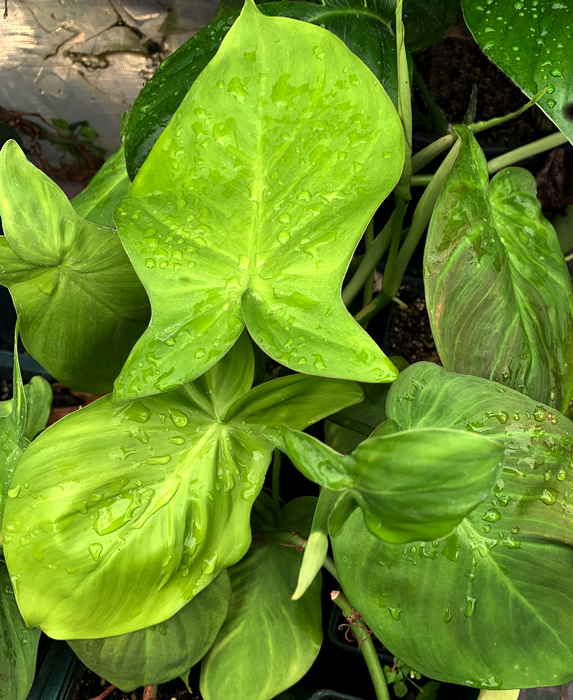
Return to This Plant's Category: Aroids
Philodendron camposportoanum

Code: 90656
Price: $39.95
Quantity in Basket: None
Family: Araceae
The small slightly velvety and glossy leaves on this rare philodendron start out heart shaped on a young plant, then produce leaves with upper lobes as the plant gets older, until at plant maturity the new leaves are deeply trilobed. These deep green leaves, reaching 8 to 12 inches in length, can take on a reddish brown color in brighter light. Give it a rich free draining potting mix with added perlite for best results. This fast growing vine is best in bright shade, avoiding direct sunlight. It is primarily a ground dweller in its native forest habitat in western Brazil and Bolivia. Outdoors in tropical climates allow it to climb or indoors grow it as a house plant with a totem.
4 inch pot



(B) Hanging
basket (D) Dwarf
under 12" (F) Flourescent lights for
indoor light culture (H) Humid
conditions (M) Miniature
under 6" (T) Terrarium
plant (W) Winter
flowering
Key to USDA Hardiness Zones
